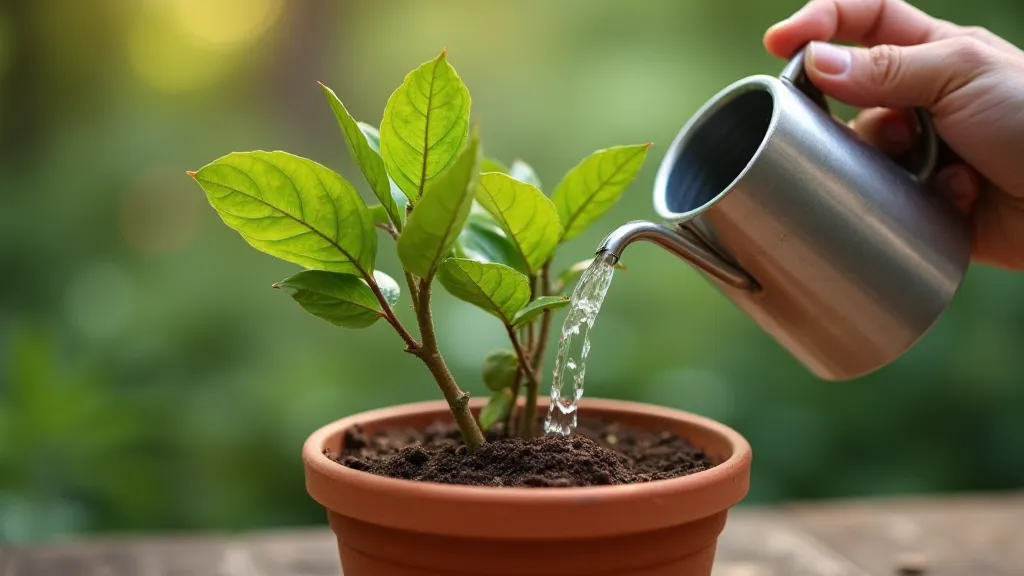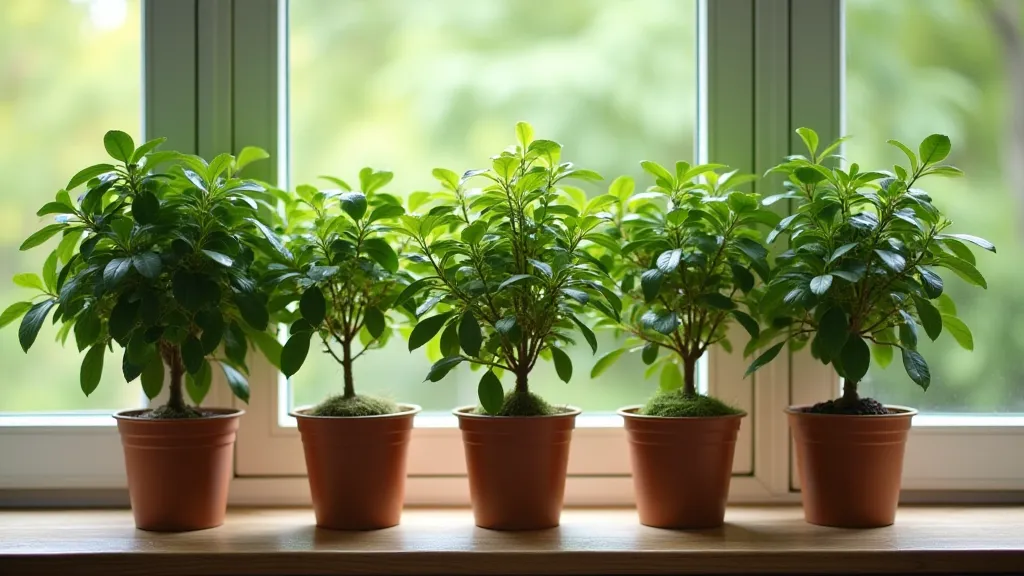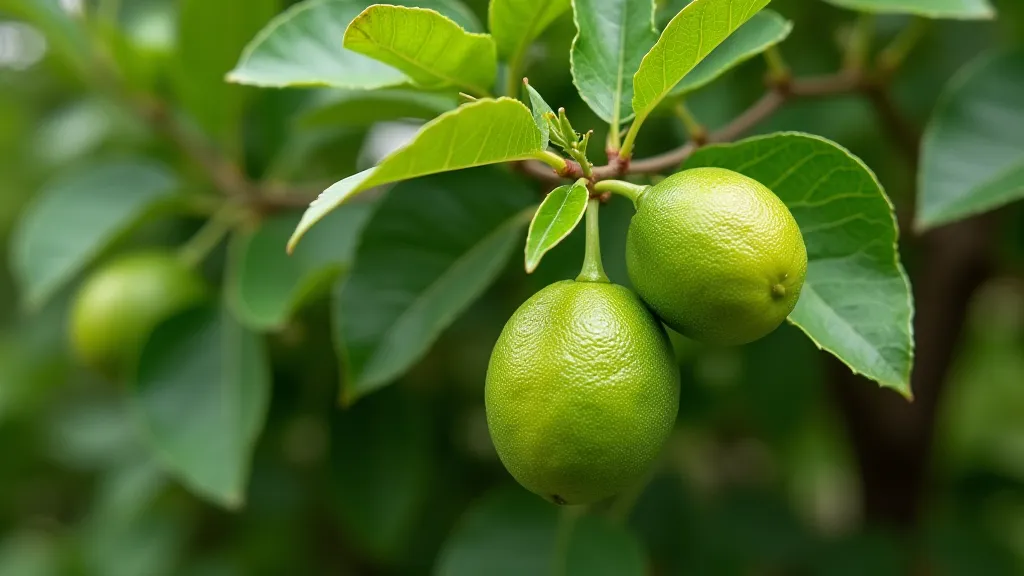Watering & Humidity: Keeping Your Citrus Happy & Hydrated
Growing dwarf citrus trees indoors can bring the joy of fresh fruit and vibrant greenery into your home. However, success hinges on understanding and meeting their specific needs. Two of the most crucial aspects of this are proper watering and maintaining adequate humidity. Let’s delve into how to master these essential elements for thriving dwarf citrus trees.
The Art of Watering Dwarf Citrus Trees
Citrus trees aren’t fans of being constantly wet, nor do they enjoy being allowed to dry out completely. Finding the sweet spot requires observation and adaptation based on your tree’s environment. Getting started with dwarf citrus can feel overwhelming, but resources like our guide, "Dwarf Citrus Trees for Beginners: A Simple Start", can ease the process.
Understanding Watering Frequency
There’s no one-size-fits-all watering schedule. Factors like the size of the pot, the type of potting mix, the temperature, and the light exposure all impact how quickly the soil dries out. As a general guideline:
- Spring/Summer (Growing Season): Water when the top inch or two of the soil feels dry to the touch. This might be every 5-7 days, but monitor closely.
- Fall/Winter (Dormant Season): Reduce watering significantly. Allow the soil to dry out more between waterings, potentially every 10-14 days or longer. During these colder months, it's also essential to consider the broader winter care needs of your citrus; more information can be found in our detailed article, "Winter Care for Indoor Dwarf Citrus: Protecting from Cold".
How to Water: Water thoroughly until you see water draining from the drainage holes in the pot. This ensures the entire root ball is moistened. Empty any excess water that collects in the saucer beneath the pot to prevent root rot.

Recognizing the Signs of Overwatering and Underwatering
Learning to read your tree's signals is vital. Early detection of issues is key to resolving them quickly. If you're facing persistent problems, our article "Troubleshooting Common Dwarf Citrus Problems" might provide some helpful solutions.
- Overwatering Signs: Yellowing leaves (especially older leaves), leaf drop, brown spots on leaves, wilting (despite moist soil), a musty smell from the soil. Root rot is a common consequence of overwatering and can be difficult to reverse.
- Underwatering Signs: Wilting, dry and crispy leaf edges, leaves dropping (often starting with older leaves), stunted growth. The leaves may also curl inwards as a defense mechanism.
Boosting Humidity for Indoor Citrus Trees
Most indoor environments are drier than what citrus trees prefer. They thrive in humidity levels of 50-70%, while many homes have humidity closer to 20-30%, especially during winter. This difference in humidity can lead to a variety of issues, affecting everything from leaf health to fruit production. Here’s how to increase humidity around your dwarf citrus tree:
Easy Humidity-Boosting Techniques
Simple changes in your routine can make a significant difference. A pebble tray is a remarkably effective and inexpensive method to increase humidity for your tree. Consistent humidity also relies on providing the right amount of light; our article on "Light Requirements for Thriving Indoor Dwarf Citrus Trees" can help ensure your tree is getting enough.
- Misting: Regularly misting the foliage can provide temporary humidity. Do this in the morning so leaves can dry before evening. The frequency of misting will depend on your local climate and the overall humidity level in your home.
- Pebble Tray: Place the pot on a tray filled with pebbles and water. As the water evaporates, it increases the humidity around the plant. Make sure the bottom of the pot isn't sitting directly in the water. Consider using distilled water to prevent mineral buildup on the leaves.
- Grouping Plants: Grouping plants together creates a microclimate with higher humidity as they transpire. This is a particularly effective strategy if you have multiple citrus trees.

Humidifiers: A Reliable Solution
For more consistent humidity control, consider using a humidifier. A cool-mist humidifier is generally preferred. Keep the humidifier within a few feet of the tree. Ultrasonic humidifiers are quiet and energy-efficient, while evaporative humidifiers can cover larger areas. Regular cleaning of your humidifier is essential to prevent the growth of mold and bacteria.
Troubleshooting and Ongoing Care
Adjust your watering and humidity strategies based on the season and your tree's response. Observe your tree carefully for any signs of stress. Remember that maintaining healthy citrus requires a holistic approach, encompassing proper watering, humidity, lighting, and fertilization. Don't be afraid to experiment and observe. Healthy, vibrant citrus trees are a reward for careful attention and dedication.

Remember to repot your dwarf citrus trees every 2-3 years with a well-draining potting mix to ensure continued health and vitality. Choosing the right potting mix is crucial for proper drainage and aeration of the roots. Consider a mix specifically formulated for citrus trees, which typically contains a blend of peat moss, perlite, and vermiculite. Beyond repotting, keep an eye out for common pests and diseases that can affect indoor citrus trees. Regular inspection of the leaves and stems can help detect problems early on, allowing for prompt treatment.
Furthermore, understand that different varieties of dwarf citrus have slightly different needs. For example, a Meyer lemon might prefer a slightly different watering schedule than a calamondin orange. Research the specific requirements of your chosen variety to optimize its health and productivity. Regular pruning can also help maintain the shape of your tree and encourage new growth.
Finally, be patient and persistent. Growing healthy indoor citrus trees takes time and effort. Enjoy the process and celebrate the small successes along the way.





